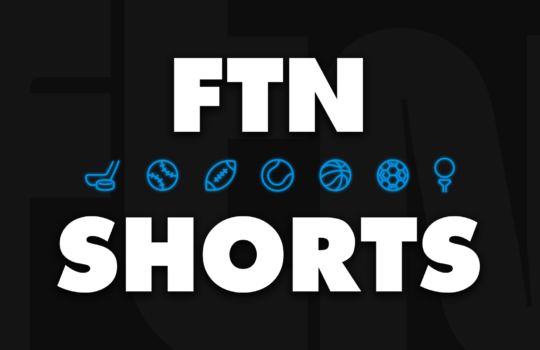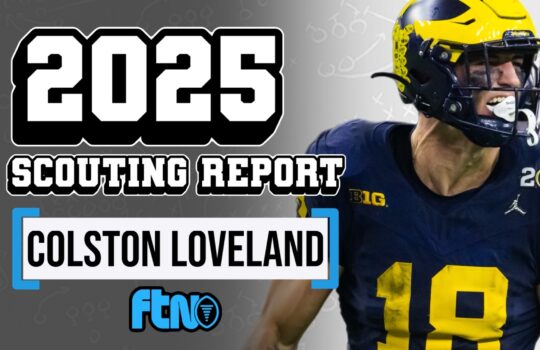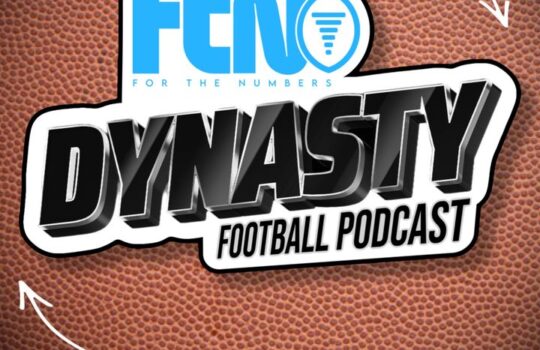
In last week’s betting article, I mentioned that in order to be a more profitable bettor, you want to know your expected value on wagers you’re making and then how to determine how much to bet. These steps are important to being profitable over time. You can have an edge in wagering but if you’re incorrectly staking, you may still lose money. It will be important to learn more about both of these processes. Below is a brief intro into finding expected value and using a Kelly criterion calculation to determine a wager amount.
I will go through an example as it pertains to wagering on a head-to-head matchup in golf. We will first start with determining the expected value of a 1-unit wager.
The first part of the process will be coming up with a probability for the wager (whether that’s using your own model, somebody else model, etc.). The probability will be in the form of a percentage of how often you (or a model) believe something will take place. In this case; how often with golfers X and Y win this matchup. This is in column “C” under “Model Probability” (Cells C3 & C4).
Below is a random example from a past 72-hole matchup:

This shows on this particular wager, our model shows an expected value of 0.03 units based on a 1-unit wager on Marcus Armitage at 2.0 odds (+100 American odds). This is telling you that you would expect to return 0.03u every time you make this bet if your model is perfect (which we know is not the case).
What you hopefully see is that over time you are winning money on your positive expected value wagers, but due to no model being perfect, your actual results will not add up to your expected results.
Cool, I show positive expected value, now how much should I wager?
I use a Kelly Criterion calculator to determine what percentage of my bankroll to wager on each bet. If you’re not familiar with this calculation, a simple google of “Kelly criterion formula” can explain it in-depth. In basic terms, this Kelly formula is designed to let you maximize your wager based on the size of your edge and bankroll.
To determine your wager percentage, the following formula will be used:
“(sportsbook decimal odds – 1 * model probability) / (sportsbook decimal odds-1)"
Now this wager percentage would assume your model is absolutely the correct probability and as we discussed earlier, that simply isn’t the case. Now because bettors assume their model is not perfect, many will use a “1/4 Kelly” model, or some other factional Kelly calculator, meaning they multiple their wager percentage by 0.25 to add in some margin of error on their model. Over time, the more you use your model and wager, the better understanding you will have of its accuracy, so you can begin to tailor your fractional Kelly wagering amount to correspond with this knew knowledge.
Below shows the same example above, factoring in the Kelly formula.

As you can see, I have added more variable columns. I broke it out for a better visual but if you’re familiar with Excel, you can combine more of these cells directly into the formulas to get rid of the helper columns in the future.
So, in this example, I set it up to a 15% Kelly wager, assuming that my model is not perfect, so I input that percentage into cell H3. If you want your wagers to be “full Kelly,” you would simply put “100%” in cell H3, or “25%” for quarter Kelly.
As you can see, I have a bankroll cell in “L3”, which you can set to your own actual bankroll. Based on all of the variables and a $575 bankroll, it’s suggested you wager $2.42 on Marcus Armitage at decimal odds of 2.0 (+100 American odds).
You can set up your excel sheet however you want, but I just wanted this to be a very basic intro to these concepts if you’re not familiar with them. In the long run, your bet size will grow and shrink with your bankroll to keep wagers appropriate for your edge.
If you would like further information or have questions, feel free to DM me in the FTN Discord and I will answer your questions to the best of my ability!
**You will have to come up with your own win probabilities for the golfers. You can use a model or just price them yourself for practice and start small. Perhaps in the future I will go over creating a very skeleton model to achieve your own probabilities.
















































 New York Jets
New York Jets  New England Patriots
New England Patriots  Miami Dolphins
Miami Dolphins  Buffalo Bills
Buffalo Bills  Pittsburgh Steelers
Pittsburgh Steelers  Cleveland Browns
Cleveland Browns  Cincinnati Bengals
Cincinnati Bengals  Baltimore Ravens
Baltimore Ravens  Tennessee Titans
Tennessee Titans  Jacksonville Jaguars
Jacksonville Jaguars  Indianapolis Colts
Indianapolis Colts  Houston Texans
Houston Texans  Las Vegas Raiders
Las Vegas Raiders  Los Angeles Chargers
Los Angeles Chargers  Kansas City Chiefs
Kansas City Chiefs  Denver Broncos
Denver Broncos  Washington Commanders
Washington Commanders  Philadelphia Eagles
Philadelphia Eagles  New York Giants
New York Giants  Dallas Cowboys
Dallas Cowboys  Minnesota Vikings
Minnesota Vikings  Green Bay Packers
Green Bay Packers  Detroit Lions
Detroit Lions  Chicago Bears
Chicago Bears  Tampa Bay Buccaneers
Tampa Bay Buccaneers  New Orleans Saints
New Orleans Saints  Carolina Panthers
Carolina Panthers  Atlanta Falcons
Atlanta Falcons  San Francisco 49ers
San Francisco 49ers  Seattle Seahawks
Seattle Seahawks  Los Angeles Rams
Los Angeles Rams  Arizona Cardinals
Arizona Cardinals 










 Boston Celtics
Boston Celtics  Brooklyn Nets
Brooklyn Nets  Philadelphia 76ers
Philadelphia 76ers  New York Knicks
New York Knicks  Toronto Raptors
Toronto Raptors  Chicago Bulls
Chicago Bulls  Detroit Pistons
Detroit Pistons  Milwaukee Bucks
Milwaukee Bucks  Cleveland Cavaliers
Cleveland Cavaliers  Indiana Pacers
Indiana Pacers  Orlando Magic
Orlando Magic  Atlanta Hawks
Atlanta Hawks  Charlotte Hornets
Charlotte Hornets  Miami Heat
Miami Heat  Washington Wizards
Washington Wizards  Denver Nuggets
Denver Nuggets  Minnesota Timberwolves
Minnesota Timberwolves  Oklahoma City Thunder
Oklahoma City Thunder  Portland Trail Blazers
Portland Trail Blazers  Utah Jazz
Utah Jazz  LA Clippers
LA Clippers  Golden State Warriors
Golden State Warriors  Los Angeles Lakers
Los Angeles Lakers  Phoenix Suns
Phoenix Suns  Sacramento Kings
Sacramento Kings  Dallas Mavericks
Dallas Mavericks  Houston Rockets
Houston Rockets  Memphis Grizzlies
Memphis Grizzlies  New Orleans Pelicans
New Orleans Pelicans  San Antonio Spurs
San Antonio Spurs 










